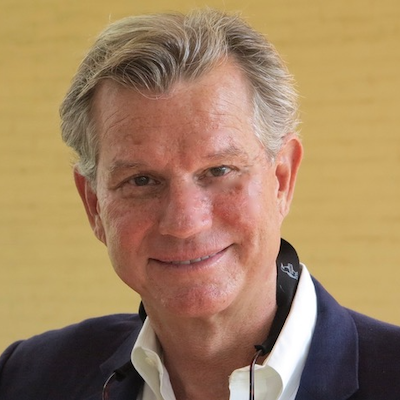The Middleburg Impact: Rhinos Without Borders
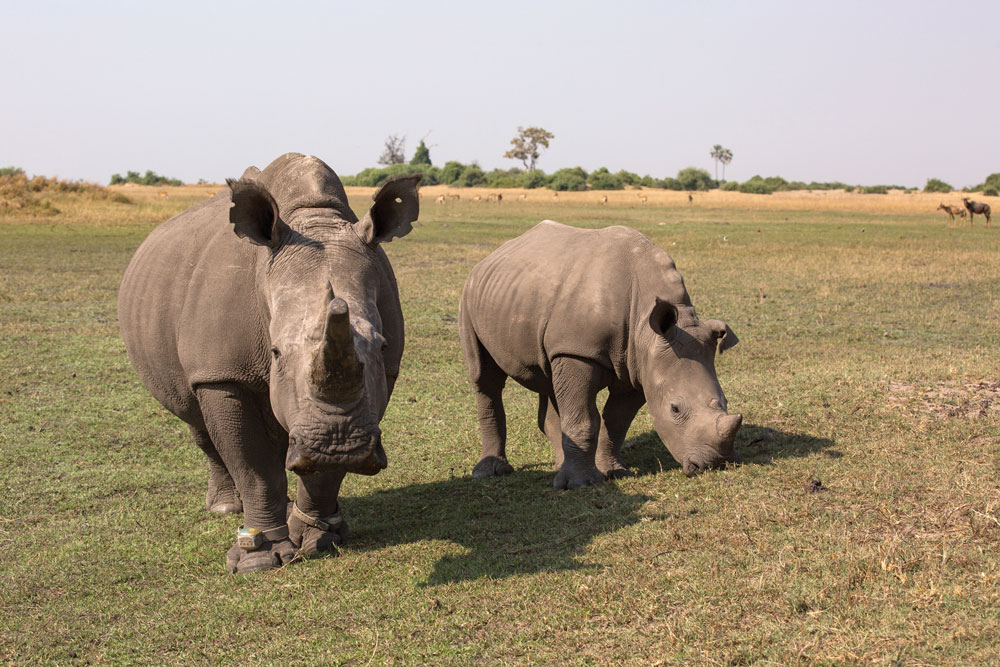
Story and photos by Callie Broaddus
Although the U.S. is a leading force combatting global wildlife crime, it remains the world’s second-largest market for illegal wildlife products. On Dec. 19, 2018, Upperville resident Keith Foster pleaded guilty to violating the Lacey Act, trafficking illegal endangered wildlife products through his Middleburg shop, The Outpost. He forfeited $275,000 and over 175 smuggled wildlife products, including ivory, sawfish blades, turtle shell and more. The following story illuminates how some Middleburg residents are engaged in a bold effort to fight the illegal wildlife trade and save one of the planet’s most treasured and endangered inhabitants: the rhino.
A cacophony of birdsong and buzzing insects penetrates the Botswanan September air with surprising density, nearly drowning out the lunchtime conversation. Sitting outside at a long wooden table are two of the most widely recognized wildlife filmmakers in the world, National Geographic Explorers-in-Residence Dereck and Beverly Joubert. Across from them sits Dr. Sven Bourquin, a renowned crocodile expert. But crocodiles are not the topic of today’s conversation; today, they are discussing the Jouberts’ latest big-thinking solution to Southern Africa’s rhino poaching epidemic.
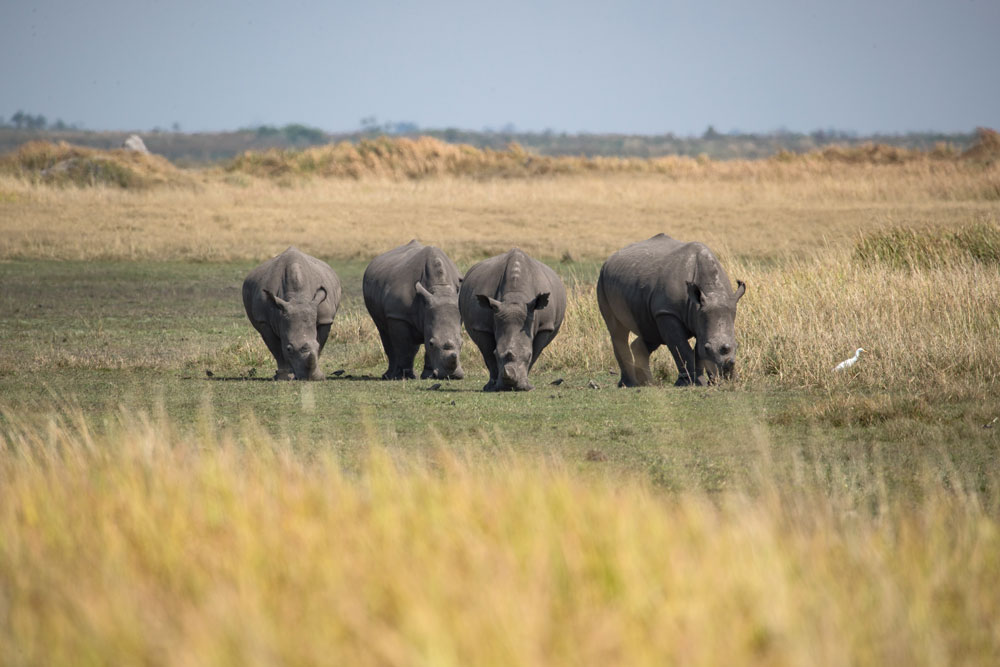
The project, Rhinos Without Borders, is an audacious plan to translocate at least 100 rhinos from heavily poached areas in Southern Africa to safe havens in Botswana, a country whose “no tolerance” poaching policy has been both controversial and effective. Bourquin is the project’s monitoring coordinator, responsible for a team of rhino monitors that works with the Botswana Defense Force and Department of Wildlife National Park’s anti-poaching units to keep constant watch over the 87 rhinos that have so far been moved under program—as well as the 22 rhino calves that have been born since the translocations began in 2015.
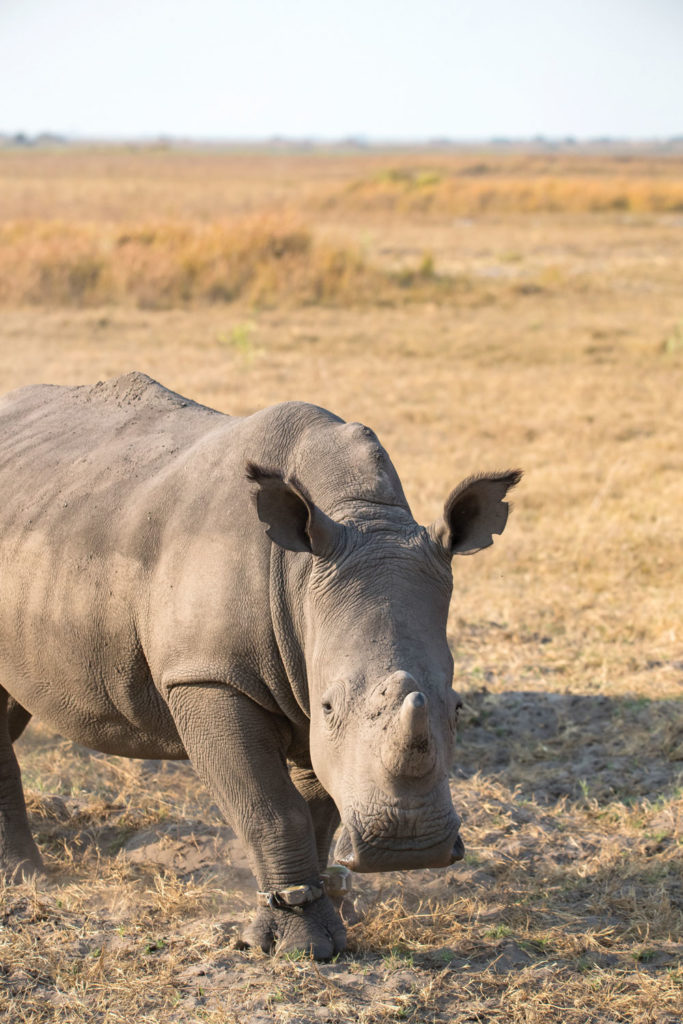
But Botswana hasn’t always been a safe haven for wildlife; in fact, the filmmaking duo once pointed their focus in quite a different direction—moving the last white rhinos out of the wild, into areas where the government could ensure their protection. “In May 1991, Beverly and I heard the last black rhino in this country being shot,” recalls Dereck Joubert. “And we then called in the army. At first, they deployed 32 men, then 800 men.”
The remaining white rhino population was moved to safety. Two decades later, while poaching rates in South Africa were soaring, poaching in Botswana had ground to a halt. It wasn’t until 2014 that the initial plan truly materialized, when Dereck Joubert made a promise to then-President Ian Khama.
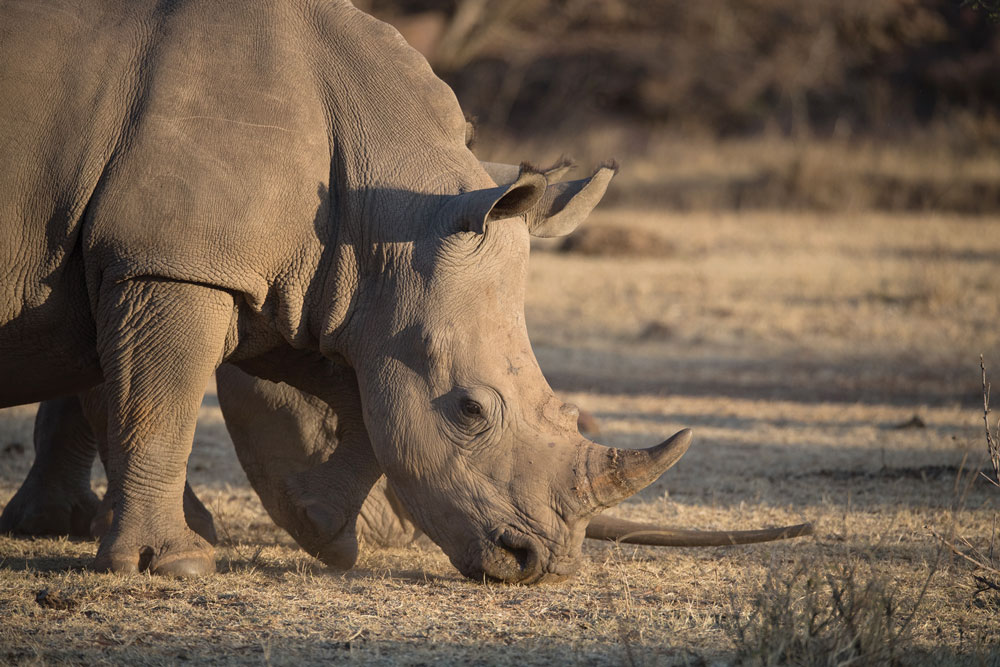
“I said to him, ‘Where are we with bringing rhinos back to Botswana?’” Various efforts had begun to return rhinos to the wild in small numbers, but it would take a vast, coordinated effort to give the species a sturdy foothold. Joubert continued, “‘Why don’t we do this at scale?’ Because only when you get populations, whatever they are, beyond fifty animals, do they start breeding properly themselves—100, even better. So, he said, ‘What do you mean scale?’ And I said, ‘One-hundred. Let’s bring in 100 rhinos.’”
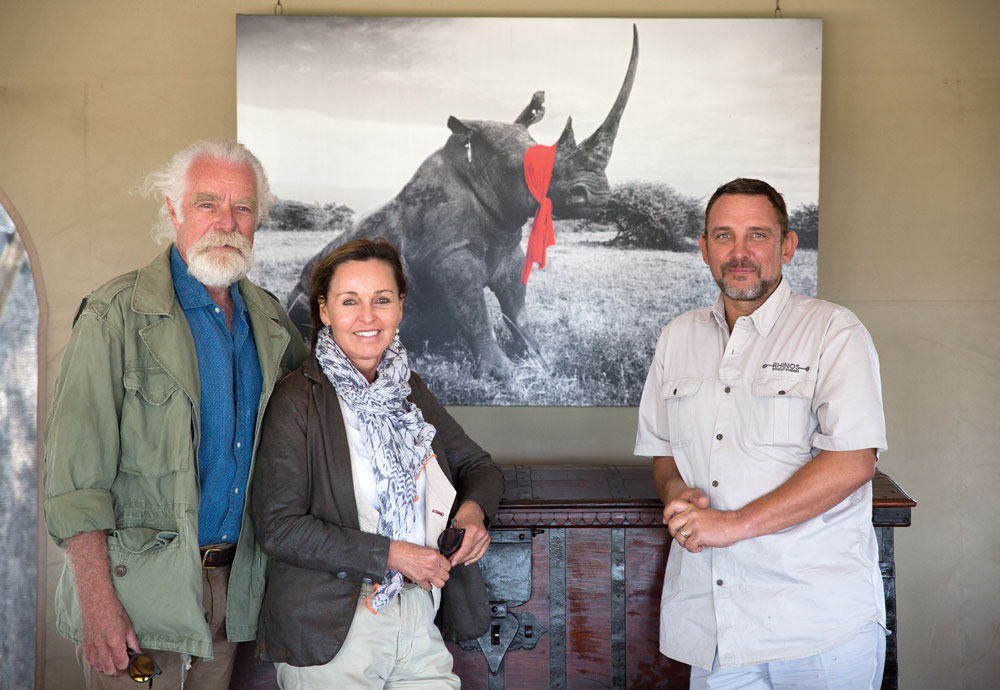
Gathering Support
One June 2014 evening at Jason Paterniti and Nicole Watson’s Middleburg farm, a group of two dozen locals form a casual semi-circle on the lawn. They listen as Dereck and Beverly Joubert describe Botswana’s pristine Okavango Delta and their plan to return one iconic species to the landscape.
To pay for the translocation of 100 rhinos—including the quarantine, transport, veterinary costs, permits, telemetry equipment and a fully staffed security team—the Jouberts would need to raise roughly $5 million, or about $50,000 per rhino.

But far from holding a black-tie auction or high-flyer gala, Paterniti and Watson throw blankets on the lawn and invite friends to bring their kids. The guests are horseback riders, a yoga teacher, a Google executive, another National Geographic Explorer—from all walks of life, they share a common belief in the inherent value of animals and healthy ecosystems. “We thought at first that we could go to one of the big foundations and get the whole project funded,” explains Beverly Joubert, “but that emotional resonance we’re talking about happens best on a personal level.”
That was likely a factor for Dave Vos, who was also a guest speaker on the evening. “A key focus of mine for many decades has been the poaching problem,” says Vos. “Because when I grew up as a kid in South Africa, there were half a million lions.” According to current estimates, the wild lion population teeters at the same precarious level as the white rhino: 20,000 individuals. “It’s absurd. In just four or five decades, it’s gone from a really healthy population to a borderline existence population.”
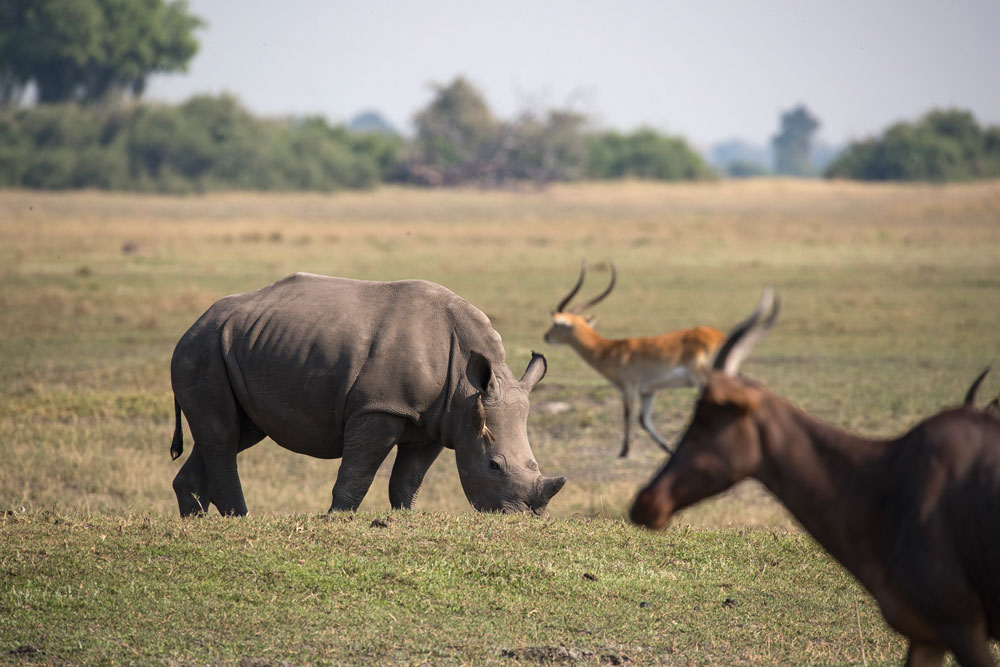
Vos and his wife, Patricia, are among those who sponsored a rhino at the 2014 gathering. As word of the Jouberts’ plan spread, more friends from Middleburg and Palm Beach, FL, pledged their support. All told, the Middleburg gathering procured more than enough funding to move seven rhinos during the project’s inaugural year. “We weren’t really trying to do anything other than have interesting conversations,” laughs Watson.
Paterniti—despite years of involvement in other anti-poaching efforts—only met Vos through his yoga teacher Sylvia Vitazkova, another of the evening’s guests. He emphasizes that anyone can have a big impact in the world of conservation. “One of the important things about the community is it doesn’t matter if you can write the big check,” says Paterniti, “if you have a big heart and you can connect people.”
“Our life is so much richer for the people we’ve encountered, and for being part of projects and how much it’s broadened our world,” says Watson, absent-mindedly scratching the over-sized ear of their Great Dane, Dexter. “I feel like for philanthropy, or if you’re introducing people to a cause, if it’s a good fit, it’s a gift. Because you shouldn’t feel like you’re picking somebody’s pocket.”
“It’s everything,” says Paterniti. “At the end of the day, you don’t get to keep this house, this beautiful farm. You have memories and you know the people, you share the journey. I mean, that’s what it’s all about.”
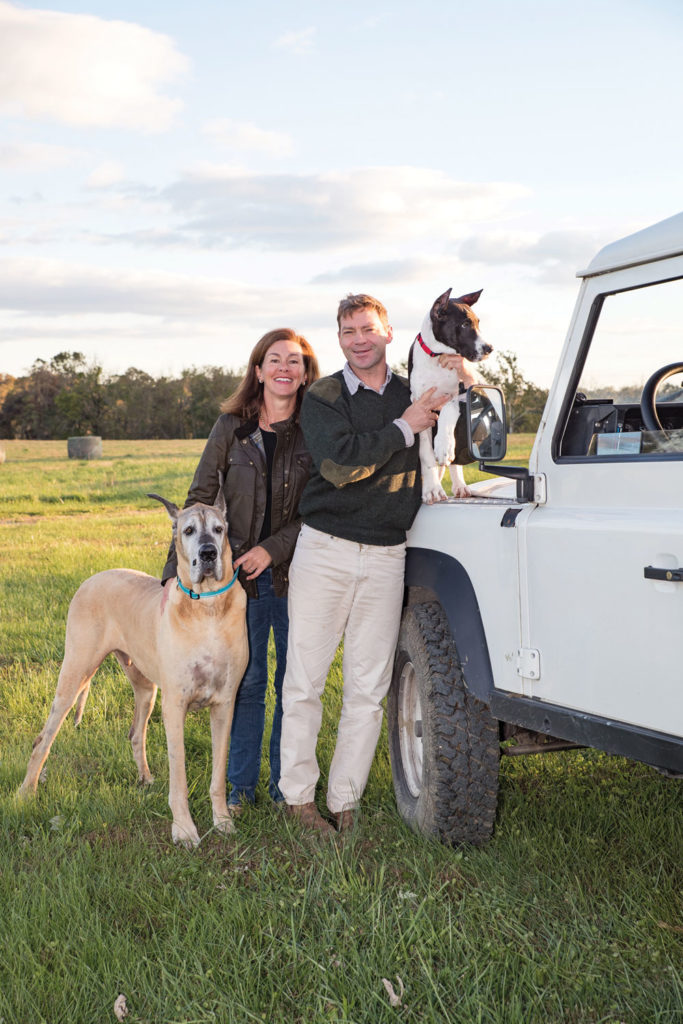
An Ecosystem for Humanity
If community is important in philanthropy, it is even more so on the ground, especially in the villages that surround conservation areas. In Botswana, Bourquin and his team at Rhinos Without Borders rely on the community outreach and education programs of their nonprofit parent organization, the Great Plains Foundation, to ensure a culture of protection around the rhinos’ new habitat. Many of their efforts are directed to educating communities about the benefits already conferred by living harmoniously within a wildlife-rich landscape.
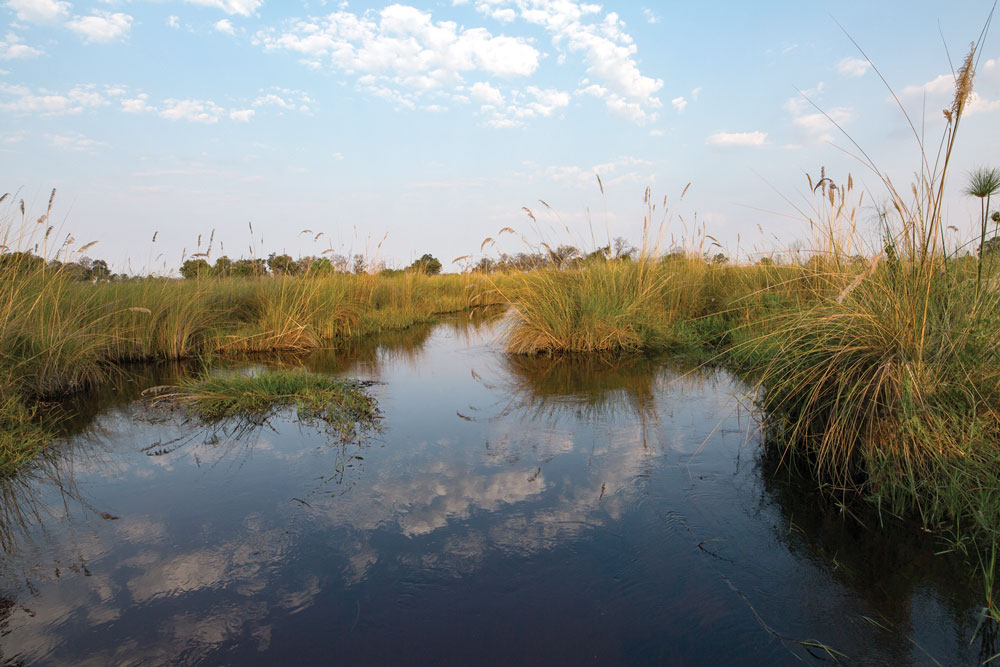
“When people think that they’re not benefiting from the wildlife, you can point out to them that all of your infrastructure here—your clinics, your electricity, your water—everything that comes to you is as a direct result of tourism,” says Bourquin. “So, although you might not see a direct benefit into your pocket from wildlife, it’s still there. And it’s still tangible. You just need to be made aware of it.”
“When we bring the rhinos into Botswana, they become state assets,” continues Bourquin. “We donate the rhinos that we bring in to the Botswanan people. And I think because of that, it gives them this huge vested interest to support us, and to assist us in our anti-poaching and monitoring efforts.”
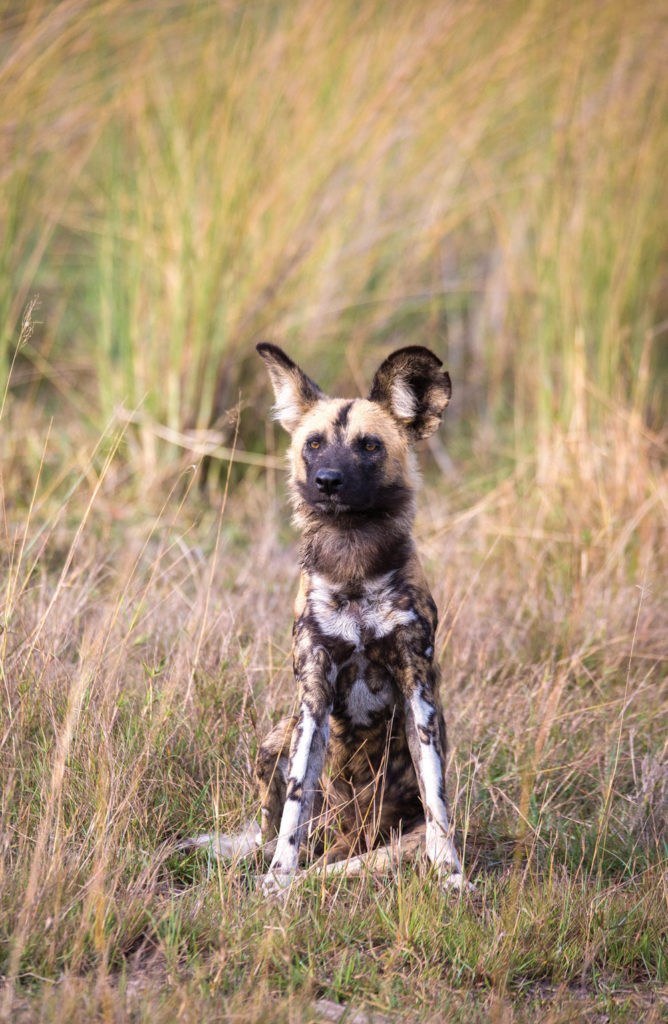
In some cases, that interest actually translates to a job. Rhino monitor Oefile “Jacob” Motshereganyi glances at two grazing rhinos before he speaks. “Since I joined them, I feel that my life has changed.” Motshereganyi explains through working in conservation, he has grown to love seeing wildlife in its natural habitat, adding with a laugh that “working in the office is not like working in the bush.”
“I think we have to be humanitarians,” says Beverly Joubert, insisting that animals need to be protected within their environment, as opposed to relying on zoos or quarantine as vehicles to save threatened species. “So, it’s not divorcing one from the other. We need to protect the whole ecosystem.”
“We need to protect it actually for humanity. In every way. And I think too many people are divorced from that; they feel like ‘oh, who cares if you’re going to lose a million acres to industrialization or desertification, whatever it is?’ Humanity does care,” she continues, stressing every word. “We need those areas. Those really are, like the ocean, the oxygen of the planet—the spiritual energy of the planet. We need to keep them alive. So, keeping the ecosystem, the whole environment, is key.”
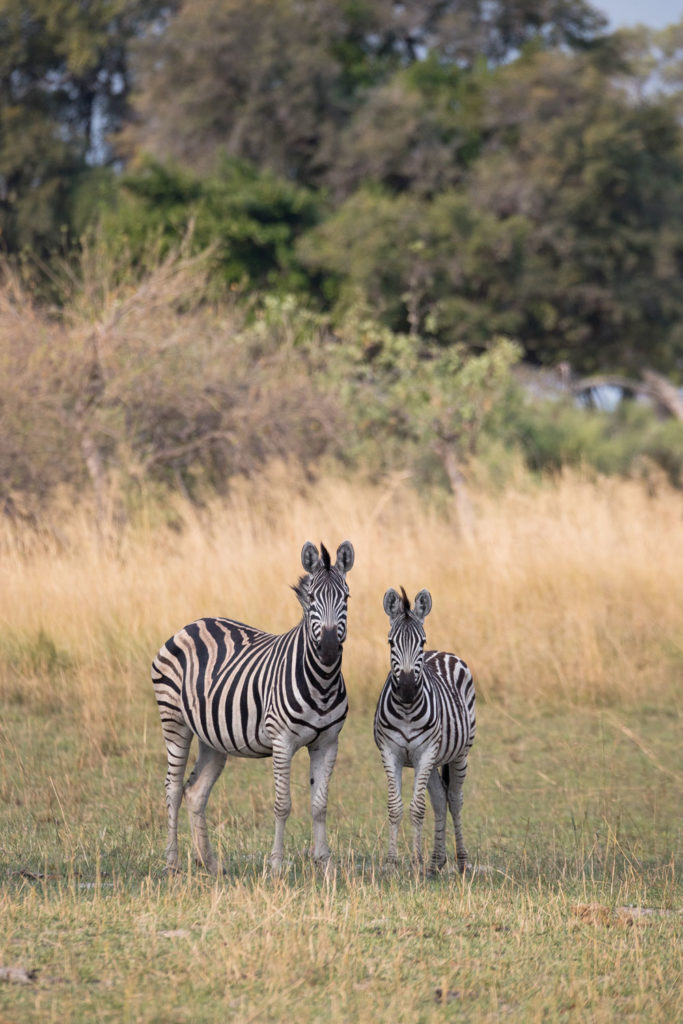
The increased security that has necessarily conveyed with the translocated rhinos is already benefiting the broader ecosystem. “Although we are going out to monitor the rhinos, we’re responding to all poaching incidents,” Bourquin notes, adding that they have made numerous arrests of poachers engaging in the illegal bush meat trade. “So, the rhinos actually act as an umbrella for securing areas for wildlife in general.”
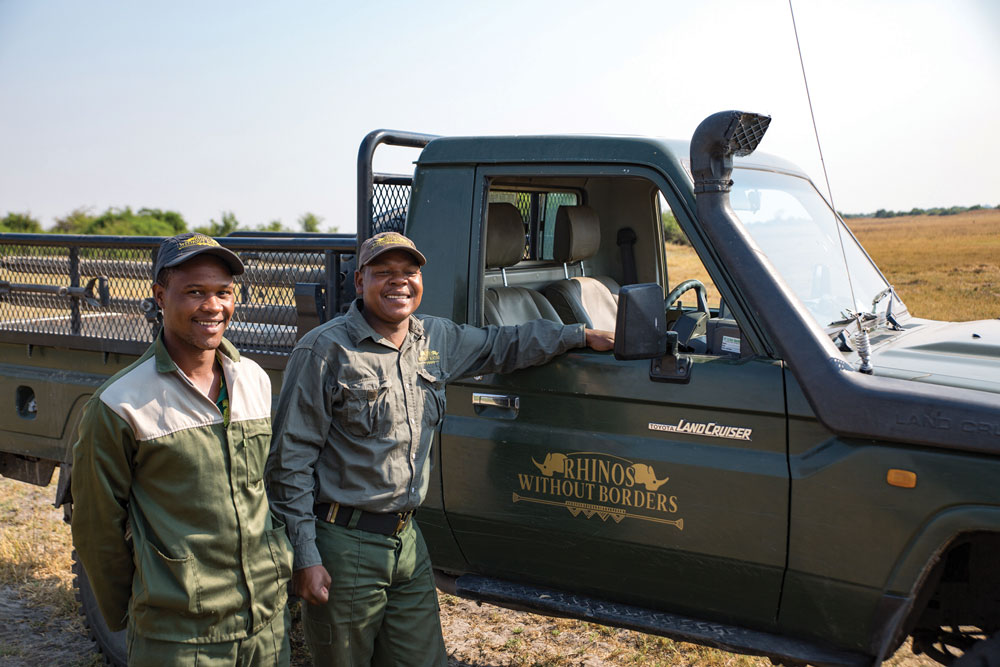
That umbrella effect was expected and intentional, and one of the main reasons the filmmaking duo took up this mantle in the first place. “The impact they’re having on the habitat is amazing,” Dereck Joubert says of the first 87 rhinos moved into undisclosed locations throughout the Okavango Delta region. “They’re completely changing it. They’re making this ecosystem whole again.”
A Numbers Game
While fighting poaching and restoring an ecosystem are meritorious alone, Paterniti emphasizes the project’s fundamental reliance on sound data and tested theory. The concept of “spatial diversification,” creating multiple sub-populations across Southern Africa, he says, makes the species more resilient to outbreaks of disease and violence that might otherwise endanger the entire population.
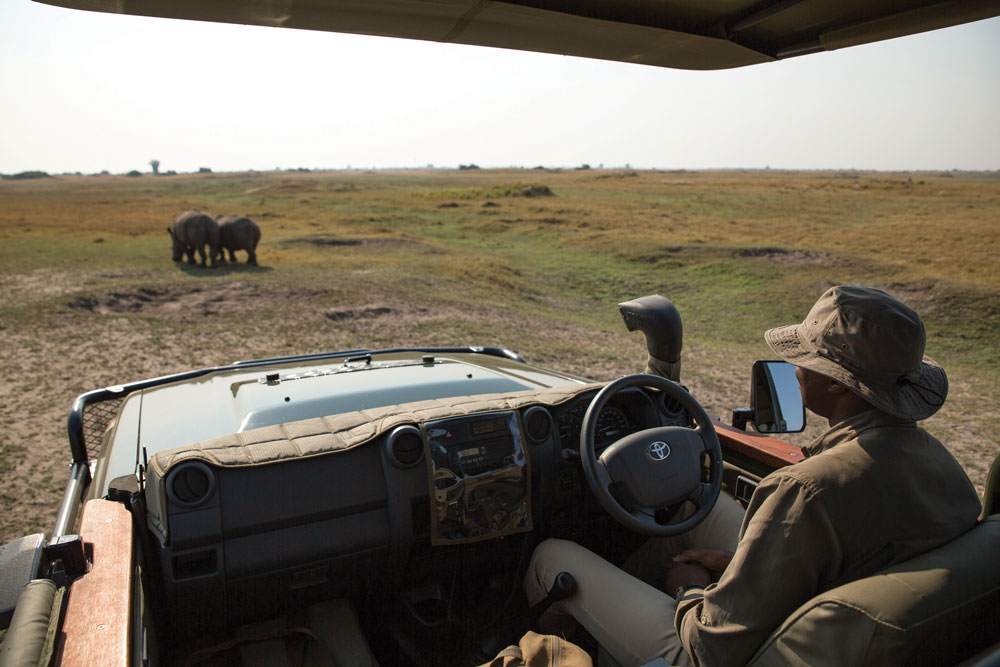
“It’s also about creating genetic diversity and spreading the risk. It doesn’t make any sense in any portfolio…to put everything into one stock,” explains Dereck Joubert, likening the effort to diversifying a financial portfolio, something Paterniti knows by trade.
“I’m not a conservationist; I’m a finance guy. My background is in numbers and managing money,” says Paterniti, pointing to a curving graph on his West room computer screen. “It’s actually the same thing with rhinos. So, what we started to track was the return on rhino—which is not dividends, but little baby rhinos.”

To explain this compounding interest of rhinos, Paterniti turns to the famous example set by South African conservationist Ian Player. Player’s translocation of about 200 white rhinos into Kruger National Park in the 1960s—a time when legal hunting had reduced the park’s rhino population to zero—manifested over time into what is now the largest extant population of rhinos in the world. At an estimated 8-9,000 rhinos, it is nearly half of the world’s population. Paterniti turns back to his screen and points to another chart. With an initial investment of 100 rhinos, his comprehensive data shows that Botswana’s rhino population should grow to 3,500 within 50 years at current rates.
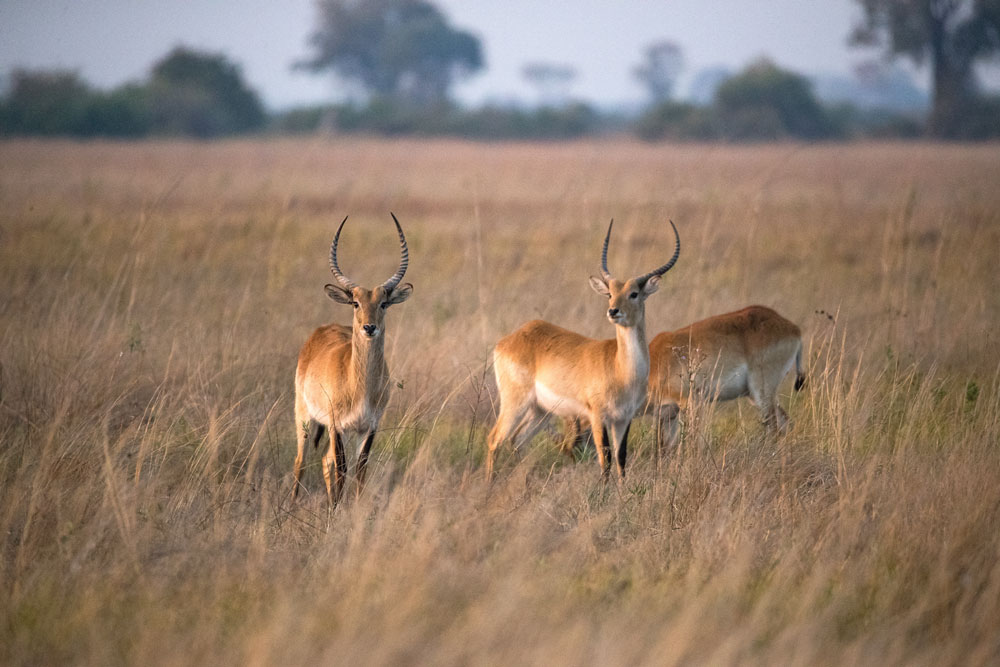
Paterniti’s original projections, compared to the real data, show that the project’s 87 rhinos are already outpacing even his high growth scenario, averaging an 8.8% growth rate over the last three years. For Paterniti, this model has financial implications. “Don’t give $100,000 to conservation 20 years from now,” he says. “For $50,000 now to move these rhinos today, you get the benefit of 8 or 10% growth. You would have to get 10% in the stock market in order to match that. So why would you not? If you care about these animals, and you have the money, it’s better to actually make these investment decisions in these rhinos today, because you’re going to get a better return on rhinos.”
The Way Forward
Back in Botswana, the lunch dishes are scraped clean. Bourquin gathers his things to fly himself back to Maun, where he can check on rhinos and monitors from his “Ops room,” and the Jouberts prepare to return to the bush, where they are filming their latest documentary.
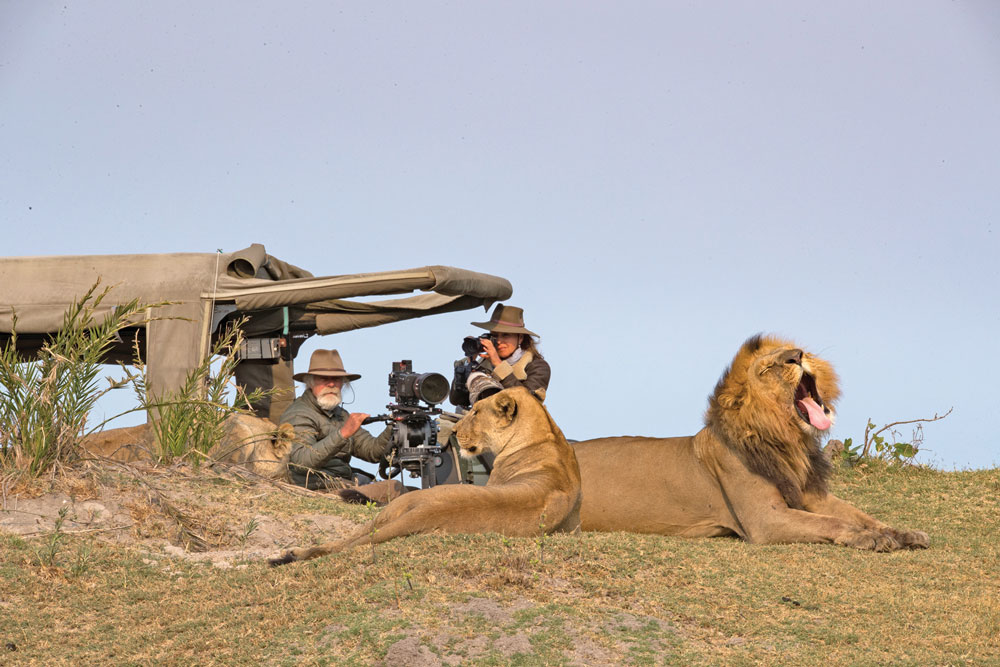
When asked for a concluding sentiment—what they love most, be it big cats, rhinos or something else—the Jouberts have no hesitation. “The whole ecosystem, without a doubt,” answers one. “It’s what you’re looking at behind us,” says the other. “Besides each other,” laughs Bourquin; the Jouberts’ love story is practically lore in the wildlife conservation world.
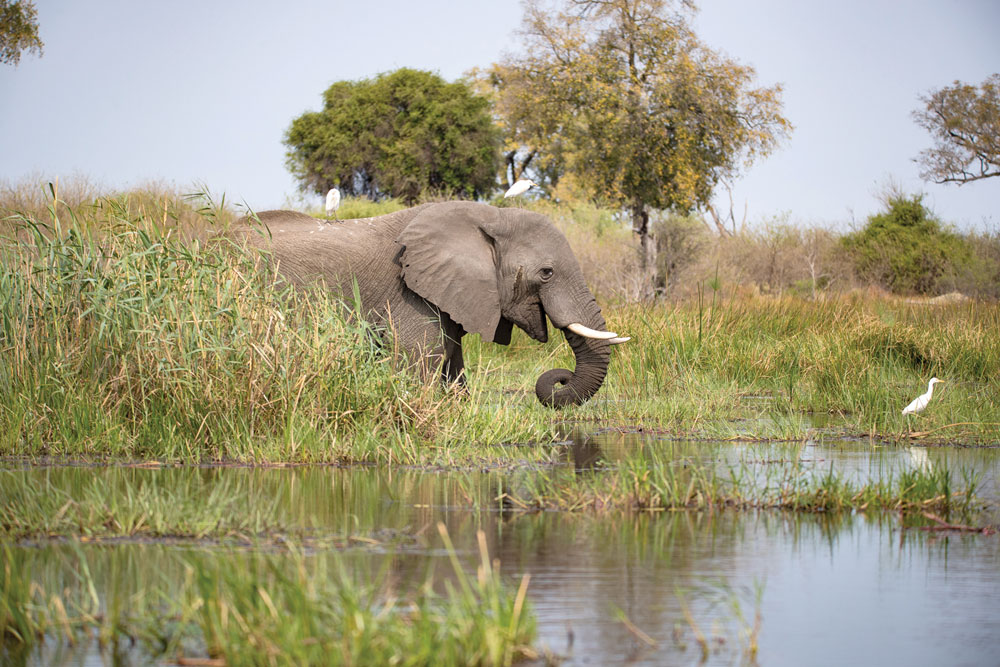
After an appreciative chuckle, Dereck Joubert continues, on a more serious note. “It gives me pain; deep, deep pain to see things disappearing from that mosaic. And we wake up every day determined, actually with a strangling feeling, that we have to do something to preserve this every day. And if you skip a day, the forces that want to erode this gain ground behind you. So, if you get flu for two weeks, you lose ground. Other people are trying to hunt it, poach it, erode it, run cattle through here, burn it, chop it down, throw plastics into the ocean and all of those sorts of things. Every single day you’re not pushing forward, you’re sliding backward.”
“Generally, people that do the kind of work that we do are optimists. Because we have to be,” says Bourquin. “I certainly wouldn’t be able to get out of bed every day if I wasn’t optimistic about making a real difference … We live in hope. And we try to make things better every day, because that’s the way forward.”
“But I also wanted to lead the way in saying companies like us pay taxes, we employ a lot of people, we give benefits to communities, and all that’s fine. That’s mandatory.” Says Joubert, resuming his train of thought. “But how do we thank Botswana, historically, for taking care of its country so well? What can we do? And gifting 100 rhinos back into this ecosystem is our way to thank them for their past good management.”
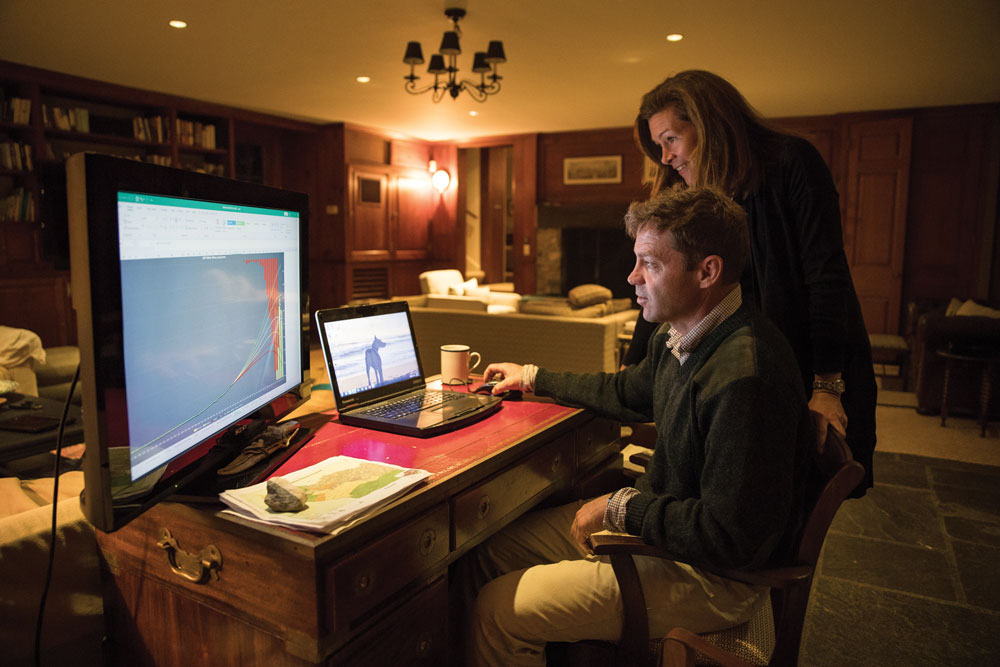
Phase one of the Rhinos Without Borders campaign is expected to conclude this year with the translocation of the remaining 13 rhinos. But the team will continue to move rhinos, and funds are needed for the ongoing protection of the new Botswanan rhino population. If you wish to get involved, or to learn more about Rhinos Without Borders, visit rhinoswithoutborders.com. For further information, contact Anna Rathmann at [email protected].
Callie Broaddus is a senior designer at National Geographic Kids, however the research and travel were coordinated independently with the Great Plains Foundation and Middleburg Life.
This article first appeared in the January 2019 issue of Middleburg Life.








